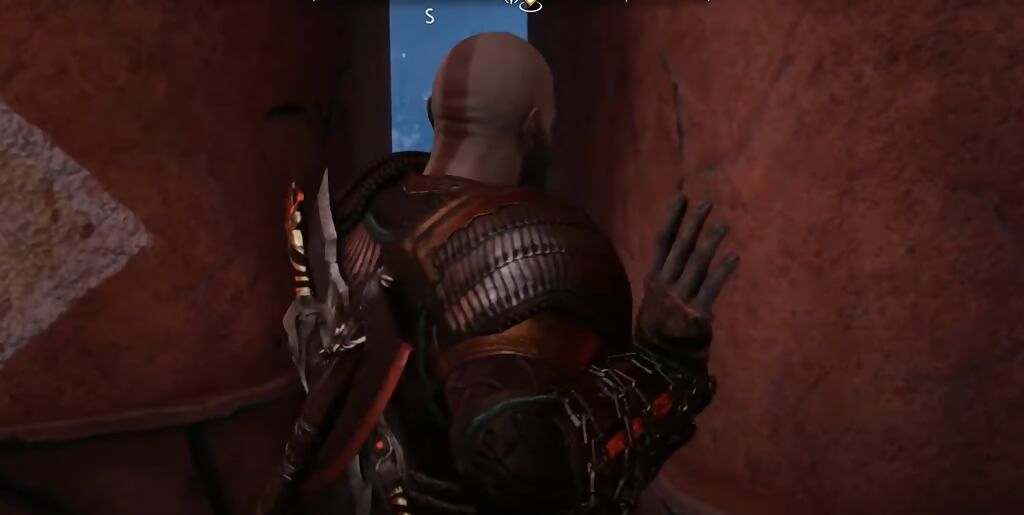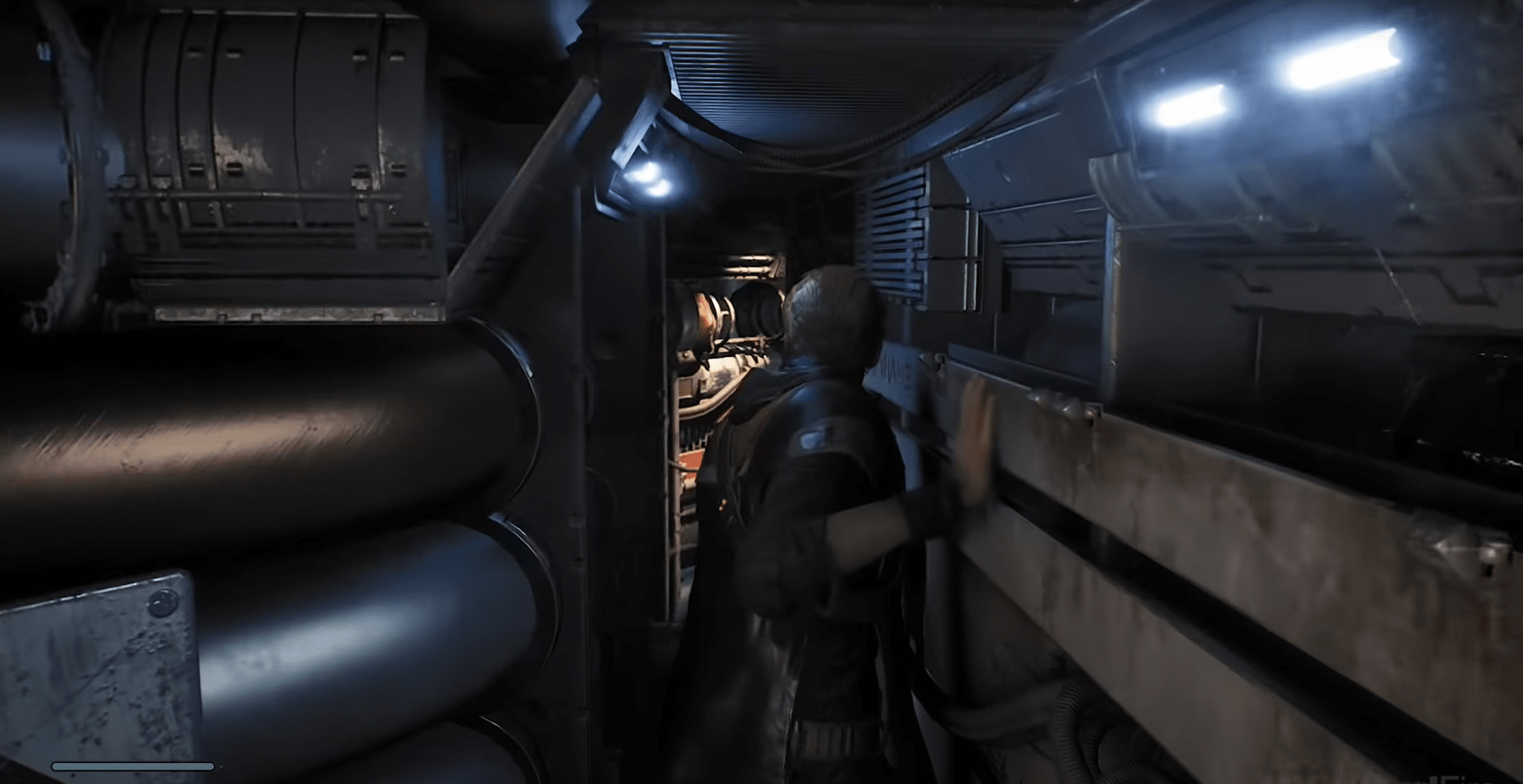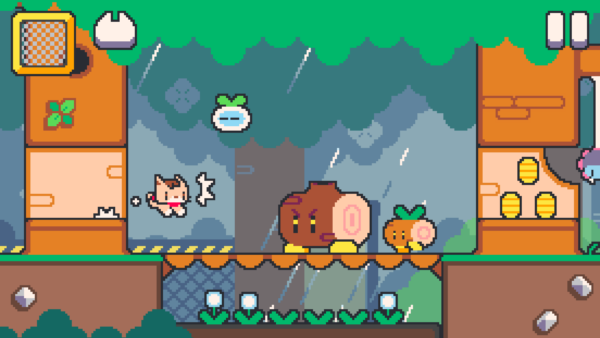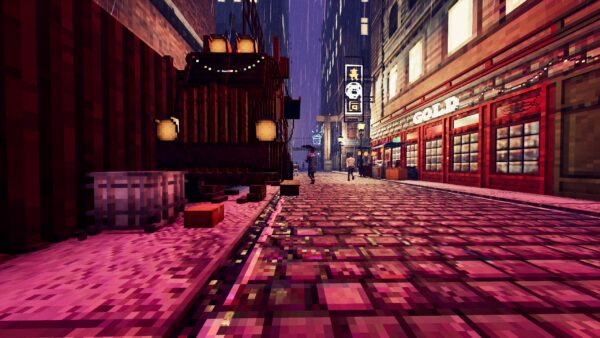
Squeeze holes are a familiar sight in everything from Tomb Raider to God of War to Final Fantasy XVI, but why? We spoke to a couple of experts to find out.
It’s Mombasa circa 2010, and Leonardo DiCaprio’s running away from a bunch of heavily-armed bad guys. Having dashed through a busy cafe and down an alleyway, he rushes through a gap between two buildings.
In a curious moment that borders on the surreal, the gap gets narrower the further DiCaprio edges in, until by the time he’s reached the other side he’s practically having to force himself through the opening like an egg from a chicken’s backside.
So goes a memorable scene from the Christopher Nolan thriller, Inception. Memorable because it highlights the film’s uneasy relationship between dreams and reality, but also because it looks so much like a staple we’ve seen repeatedly in video games since: at some point, a level forces the player to squeeze through a gap, slowing down the pace and effectively creating a choke point that demarks the end of one area and the start of another.
There’s one such scene in the 2013 reboot of Tomb Raider. Lara Croft, waking up to find herself trussed and hanging upside down in a cave, makes clever use of a flaming torch to free herself, then shuffles and shimmies her way through a tight aperture in the wall.
More recently, Digital Foundry’s John Linneman pointed out on Twitter that a clip from Final Fantasy XVI featured what he called a “squeeze hole”. You can see the moment he’s referring to here:
This is such an odd thing to share. Like, FF16 is shaping up to be absolutely amazing and I'm pretty hyped for it but…why would they show an official clip with a squeeze hole?! It doesn't make sense. https://t.co/HbFAoOGDpO
— John Linneman (@dark1x) March 22, 2023
This got me thinking: why are these squeeze holes so prevalent in games? Are they there purely for technical reasons, like the old lifts (or elevators, if you prefer) or door animations of old? Or are game designers using them for other, less obvious artistic purposes? Are they even called squeeze holes in the games industry?
According to video game designer, author, and whynow Gaming contributor Stuart Maine, squeeze holes are more officially known as “transitions”.
Maine explains that while these transitions would originally have been used to hide delays as a game’s loading information behind the scenes, in today’s era of solid-state drives, loading times have been greatly reduced, “so at some point I guess they became an aesthetic choice.”
“I think generally it boils down to pacing and breaking up flow rather than technical requirements these days,” concurs Far Cry 6 level designer Devon Wiersma. “With hardware being as strong as it is and development techniques more widely adopted for open world games, it’s difficult to go ‘over-budget’ tech-wise on one specific area that would require special loading considerations, so I think it’s safe to say most games aren’t using this primarily as a technical crutch as often.”
The transition or squeeze hole has become an increasingly prevalent staple in recent years, particularly in triple-A titles. The rebooted God of War made frequent use of them, as did its sequel, Ragnarok, which sparked its own debate last year. The Last of Us Part 2 had them. Cal frequently shoved his way through all kinds of narrow spaces in Star Wars Jedi: Fallen Order. The transition (or squeeze hole) is so ubiquitous, IGN even spent several minutes debating their relative merits in a January podcast.
But if they’re seldom used for technical reasons these days, what are transitions actually for? What purpose do they serve?
Says Maine, “Storytelling has the concept of the threshold, where you swap from one state to another as much as from one location to another, so perhaps the enforced delay while your character squeezes through a gap is part of that. It certainly makes it extremely clear that you can forget about the previous area and get ready for whatever’s in the next.”
“As with anything else in game design, I think how it’s used usually depends on the game and context in which it’s used,” says Wiersma, before referring to the Final Fantasy XVI clip mentioned above. “In the FF16 example, it’s being used in tandem with another mechanic – the dog points out there’s an opening that an ordinary player might miss – so in this instance it’s an example of how small openings can be used as a puzzle element for a player to hide a less obvious route.
“If a Level Designer simply used a tunnel large enough for a player to walk through normally it would be much harder to mask and camouflage with level art. Something like a door could be used, but that invites other complexities for the level too – a gap is just ‘a space between two obstacles’ whereas a door requires specific visual treatments and considerations to be properly used in gameplay.”
Wiersma argues that transitions (or squeeze holes) often serve to break up the flow of a level. In Star Wars Jedi: Fallen Order, the earliest scenes see Cal running, jumping, and doing a lot of sliding down shiny surfaces on his back. The slower segments, where he’s slowly working his way through a gap, provide a contrasting change of pace.
In the case of Tomb Raider, transitions provide suspense and a feeling of anticipation. “It can be used for level pacing in games too,” Wiersma says. “In many cases it’s a moment of ‘crossing a threshold’ and entering a new ‘area’ which might present new rewards, challenges, dangers, etc, and generally helps a player feel like they’re progressing from one space to another. Conversely, it can act as an anticipatory moment, since the player might be using it to enter a new area they’ve never seen before with unknown dangers or threats. In Tomb Raider, it’s apparent they want the player to feel claustrophobic and vulnerable throughout that sequence, so combining tight squeezes in with tight camera shots are being used to achieve that effect.”

Breathe in – it’s Star Wars Jedi: Fallen Order. Credit: Respawn Entertainment/EA.
Transitions can also serve as a bottle-neck, shepherding the player into a new area, and preventing them from returning to the space they’ve just been. “Some games may also need to ‘gate’ the player from areas they’ve been previously for gameplay reasons,” says Wiersma. “For example, so a player doesn’t trigger a scripted enemy encounter and then flee back through where they came, or so enemies can’t chase the player across the entire level. So these squeeze-throughs are a commonly understood video game shorthand for telegraphing to players that a certain direction is a one-way point of no return.”
Transitions can therefore provide a threshold between one area and the next, or a punctuation point in level’s design. But Maine raises another intriguing question: if you’re funnelling the player through a predefined point, why bother asking them to press a button at all? “The thing that I find odd about them,” he says, “is that you’re still required to hold ‘up’ to have your character squeeze through the gap. It’s obvious that we’re in a transition so just let me relax my hands for a moment and have the character move automatically. Does it really make the delay ‘better’ if you force players to confirm that yes, they still want to be moving forward?”
Love them or hate them, call them squeeze holes or transitions, they’ve been a part of gaming for at least a decade, and possibly much longer. Indeed, the transition appears to have sneaked its way into game design so subtly that, even though it’s now common, it’s not immediately obvious when the first squeeze holes appeared. “I have to admit I’m not sure where the practice originated,” says Maine.
“I’m unfortunately in a similar boat to you,” says Wiesma. “I can’t think of many examples from the pre-Xbox 360 era, but it definitely seemed to rise in popularity there, alongside over-the-shoulder, third-person action games like Resident Evil 4… I’m sure how difficult it is to narrow down its use speaks to how innocuous these sequences tend to be in games!”






1 Trackback or Pingback